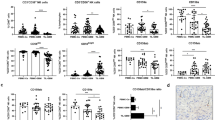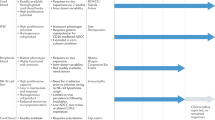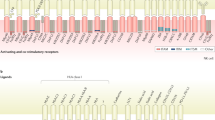Abstract
Widely disseminated neuroblastoma in children older than infancy remains a very poor prognosis disease. Even the introduction of marrow ablative chemotherapy with autologous rescue has not significantly improved the outlook for these children, presumably because of a failure to eradicate minimal residual disease. One additional approach which may hold promise is the use of immunomodulation with cytokines such as IL2 in the setting of minimal residual disease (MDR), for example after intensive chemotherapy and ABMT. However, considerable variability in the susceptibility of neuroblastoma cells to natural killer (NK) and lymphokine-activated (LAK) killing has been observed, and it is presently unclear how NK and LAK cells recognise neuroblastoma cells. In this paper we examine expression of cell adhesion molecules on neuroblastoma to determine which of these modify interaction with NK and LAK cells. We find that LFA-3 (CD58), the ligand for CD2 is of predominant importance in predicting susceptibility of neuroblastoma to the cytotoxic actions of NK and LAK cells, while expression of ICAM-1 (CD54) may also modify susceptibility. These findings were confirmed by blocking experiments in which co-culture of target cells with ICAM-1 and LFA-3 reduced LAK and NK cytotoxicity. Study of the immunophenotypic features of each patient's neuroblastoma cells before induction of MRD may be valuable in determining the likely effect of IL2 in predicting disease reactivation.
This is a preview of subscription content, access via your institution
Access options
Subscribe to this journal
Receive 24 print issues and online access
$259.00 per year
only $10.79 per issue
Buy this article
- Purchase on Springer Link
- Instant access to full article PDF
Prices may be subject to local taxes which are calculated during checkout
Similar content being viewed by others
Author information
Authors and Affiliations
Rights and permissions
About this article
Cite this article
Foreman, N., Rill, D., Coustan-Smith, E. et al. Mechanisms of selective killing of neuroblastoma cells by natural killer cells and lymphokine activated killer cells. Potential for residual disease eradication. Br J Cancer 67, 933–938 (1993). https://doi.org/10.1038/bjc.1993.173
Issue Date:
DOI: https://doi.org/10.1038/bjc.1993.173
This article is cited by
-
Mechanisms of the Antitumor Activity of Human Vγ9Vδ2 T Cells in Combination With Zoledronic Acid in a Preclinical Model of Neuroblastoma
Molecular Therapy (2013)
-
Neuroblastoma: developmental biology, cancer genomics and immunotherapy
Nature Reviews Cancer (2013)
-
Immunotherapy of Human Neuroblastoma Using Umbilical Cord Blood-Derived Effector Cells
Journal of Neuroimmune Pharmacology (2007)
-
In vitro generation of cytotoxic effectors activated by interleukin 2 (IL-2): comparison of autologous peripheral blood stem cells (PBSC) from adults and children
Bone Marrow Transplantation (2001)
-
Prognostic impact of in vivo soluble cell adhesion molecules in metastatic renal cell carcinoma
British Journal of Cancer (1999)



